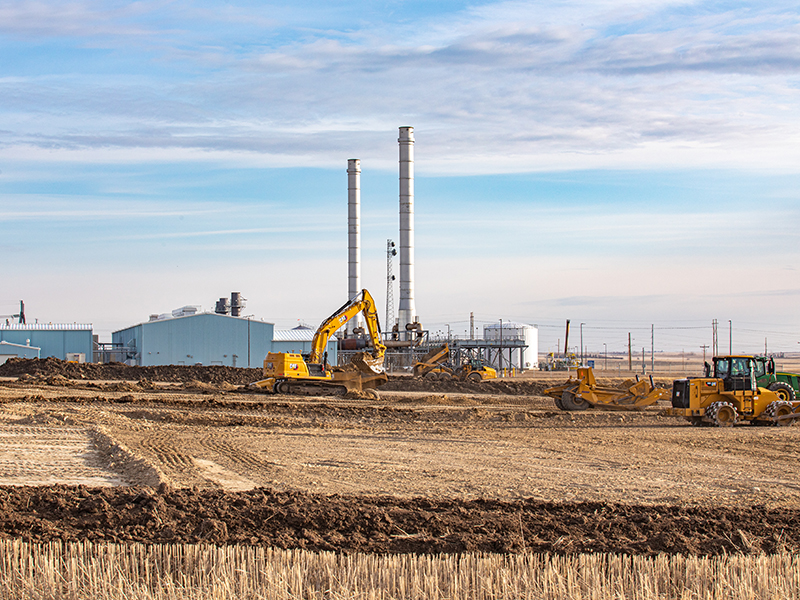- Products
- About us
- Responsibility
- Environment
- News
- Contact us
- Careers
-

Construction has begun on Pioneer Generation Station Phase IV (PGSIV), Basin Electric's newest generation project near the existing Pioneer Generation Station northwest of Williston, North Dakota.
Snow removal and earthwork began March 22 and was focused in the area where the combustion turbine and generator will be located. "As they move dirt, they dig what they call a 'bathtub,' which is typically down as far as where the bottom of piping will be located and the bottom of the foundation. Then they work their way back up with gravel," says Darrell Slavick, Basin Electric's North Dakota field coordinator.
On April 24, they began drilling auger cast piles, which are used for ground stabilization. "Basically, a hole is drilled and filled with concrete, and those piles or pilings will help hold the weight of the turbine foundations," Slavick says.
Slavick says safety is the main focus throughout the project.
Once complete, PGSIV will generate about 600 megawatts of electricity. The new natural gas-fueled generation will be a combination of combustion turbine and reciprocating engine units to provide dispatch flexibility while addressing near-term load growth and long-term grid stability in the Bakken region.

Spring 2021 (Mar-May)
Summer 2021 (Jun-Aug)
Fall 2021 (Sept-Nov)
Winter 2022 (Dec-Feb)
Spring 2022 (Mar-May)
Summer 2022 (Jun-Aug)
Fall 2022 (Sept-Nov)
Winter 2023 (Dec-Feb)
Spring/Summer 2023 (Mar-Aug)
Dakota Gasification Company
Headquarters:
1717 East Interstate Avenue | Bismarck, ND 58503-0564 USA
701.223.0441 | 1.800.242.2372
Great Plains Synfuels Plant
420 County Road 26
Beulah, ND 58523-9400 USA
701-873-2100
A subsidiary of:
Basin Electric wants all interested and qualified candidates to apply for employment opportunities. If you are an applicant with a disability who is unable to use our online tools to search and apply for jobs, or who needs other assistance or accommodations, please contact us at 701-223-0441. Please indicate the specifics of the assistance needed or provide your contact information, and a Basin Electric Human Resources representative will contact you. Basin Electric is an Equal Employment Opportunity Employer regarding race, color, religion, sex, sexual orientation, gender identity, national origin, disability, and veterans status.